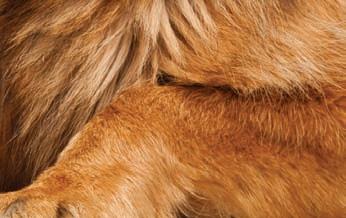
2 minute read
PET CARE
Spaying and neutering your pets can help lower the population of unwanted pets by preventing your pet from . accidentally reproducing.
Here’s what you need to know r about spaying and neutering your pets from the American Veterinary Medical Association. Why Spay or Neuter?
Millions of unwanted animals are euthanized every year, the AVMA says, many the product of unintentional breeding. By having t your pet sterilized, you can prevent unintended litters and also avoid some serious health problems. Spayed or neutered animals are protected from diseases such as uterine infections and some types of cancer.
Spaying and neutering, the AVMA says, has no effect on a pet’s intelligence of ability to learn, play, work or hunt. Some pets tend to be better behaved after spaying or neutering, and the operation may eliminate some unwanted behaviors associated with breeding.
Ovariohysterectomy: This is the technical term for spaying. It means the ovaries, Fallopian tubes and uterus are removed from a female animal. It eliminates a heat cycle and breeding behaviors.
Orchiectomy: This is the technical term for neutering. The testes are removed from a male pet, making him unable to reproduce and reduces or eliminates breeding behaviors.
There are also alternatives to the typical spay or neuter.
Hysterectomy: Removing the uterus and part of the Fallopian tubes of a female pet. This makes them unable to reproduce, but her ovaries and her hormones will remain. This may not eliminate their breeding behavior.
Vasectomy: The vas deferents, or the tube that conducts sperm from the testes is cut or removed. This makes the pet unable to reproduce, but they retain the testes and hormones. Breeding behaviors may also remain.
Ovariectomy: Ovaries are removed from a female pet, but the uterus remains. She is still able to reproduce, but it eliminates her heat cycle and breeding behaviors. n,
Orchiectomy: This is the technical term for neutering. The testes are removed from a ma m le
ariectomy:Ova Ovaries are ed from a female pet, bremove ut ,
pet, making him unable to reproduce and reduces or eliminates breeding behaviors.
There are also alternatives es to the typical spay or neuter. .er
Hysterectomy: RemovingHy erectomy: Removi the uterus and part of the e uterus and part of the Fallopian tubes of a female tubesofaf pet. This makes them unable to reproduce, but her to ovaries and her hormones will remain. This may not emain. This may no eliminate their breedingheir breedi behavior. p rus remaithe ute ns. She is still reproduce, but it able to el e ates her heat cycle and imina edibr b ee ng behaviors.
Spay/Neuter Your Pets



Nonsurgical Options
There is a product, the AVMA says, that can be injected into your male pet to stop sperm production and render the animal al infertile. However, it doesn’t stop the hormones and, therefore, any y breeding behaviors will continue. e.

Vocabulary
There are some terms you may hear your veterinarian use when discussing spaying and neutering your pet. ay n ng

17











